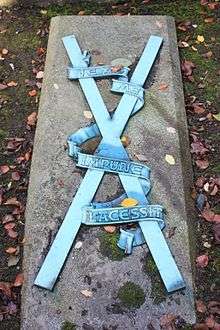William Hay, 10th Marquess of Tweeddale


William Montagu Hay, 10th Marquess of Tweeddale KT (29 January 1826 – 25 November 1911), known before 1878 as Lord William Hay or Lord William Montagu Hay, was a Scottish landowner, peer and politician. He was born at Yester House, near Gifford, East Lothian, and served in British India as a member of the Bengal Civil Service and later as a Liberal Member of Parliament.
In 1878 he succeeded his brother as Marquess of Tweeddale and as owner of some 40,000 acres in Scotland. He went on to become Lord High Commissioner to the General Assembly of the Church of Scotland and was appointed a Knight of the Thistle.
Life
Hay was born at Yester House, the third son of George Hay, 8th Marquess of Tweeddale (1787–1876) by his marriage to Susan, a daughter of William Montagu, 5th Duke of Manchester.[1] As a younger son, Hay was educated at the Imperial Service College and then served in the Bengal Civil Service from 1845 to 1862, including some years as Deputy Commissioner of Simla and then as Superintendent of the Hill States of Northern India.[2]
Following his permanent return from India Hay was Liberal Member of Parliament for Taunton from 1865 to 1868, and was elected again for Haddington Burghs in 1878. He also became Chairman of the North British Railway Company.[2]
On 18 May 1878, at St Augustine's Church, London, he married Candida Louisa, a daughter of Signor Vincenzo Bartolucci of Cantiano, Italy, and they had three sons and one daughter.[1] [3]
After succeeding his brother Arthur as Marquess of Tweeddale on 29 December 1878, he became the owner of estates totalling some 40,000 acres in Scotland.[2] In 1881 he was created Baron Tweeddale of Yester in the peerage of the United Kingdom, giving him a seat in the House of Lords.[1] As well as being Hereditary Chamberlain of Dunfermline he was Lord High Commissioner to the General Assembly of the Church of Scotland from 1889 to 1892 and again in 1896–97.[2]
He died on 25 November 1911 at his house in London, 6 Hill Street,[4] and was succeeded by his eldest son, the Earl of Gifford (born 1884).[2] He is buried at Yester Parish Church in Gifford, East Lothian, close to his family home at Yester House.
Family

He was married to Candida Louise Bartolucci (1854-1925) daughter of Vincenzo Bartolucci of Cantiano, Italy. their children were:[5]
- Susan Elizabeth Hay
- Candida Louisa Hay
- William Hay, 11th Marquess of Tweeddale
- Lord Arthur Vincent Hay, killed in action in the First World War during the First Battle of the Aisne
- Lt Col Lord Edward Douglas Hay
Honours
On 26 October 1898 Tweeddale was appointed a Knight of the Thistle and was invested at Windsor Castle on 8 December.[6] He was also a Deputy Lieutenant for the counties of Haddingtonshire (now called East Lothian and Berwickshire) and a Brigadier-General of the Royal Company of Archers, a ceremonial unit that serves as the Sovereign's Bodyguard in Scotland.[7]
References
- 1 2 3 George Edward Cokayne, ed. Vicary Gibbs, The Complete Peerage of England, Scotland, Ireland, Great Britain, vol. 12, part 2 (1959), p. 84
- 1 2 3 4 5 'Tweeddale, 10th Marquess of (born 29 Jan. 1826, died 25 Nov. 1911)' in Who Was Who 1897–1915 (London: A. & C. Black, 1988 reprint: ISBN 0-7136-2670-4)
- ↑ "Sitter: Lady (Susan Elizabeth) Clémentine Waring, née Hay (1879-1964).". Lafayette Negative Archive.
- ↑ The Electrical Journal, vol. 68 (1912), p. 309
- ↑ https://www.geni.com/people/Candida-Bartolucci/372910
- ↑ William Arthur Shaw, The Knights of England: A Complete Record from the Earliest Time, vol. 1 (1971), p. 88: "William Montagu (Hay), 10th marquess of Tweeddale. Warrant of appointment Oct. 26; invested at Windsor Castle Dec. 8 ; warrant of dispensation of installation Dec. 8. In place of No. 94."
- ↑ Edinburgh Almanac and National Repository (Oliver & Boyd, 1897), p. 626
| Peerage of Scotland | ||
|---|---|---|
| Preceded by Arthur Hay |
Marquess of Tweeddale 1878–1911 |
Succeeded by William Hay |
| Peerage of the United Kingdom | ||
| Preceded by New creation |
Baron Tweeddale of Yester 1881–1911 |
Succeeded by William Hay |